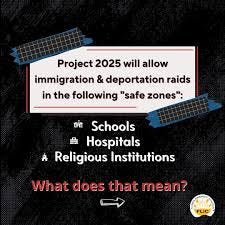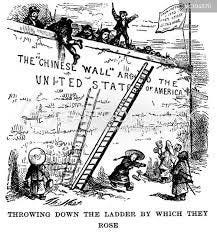On My Mind, 04232025: Several years ago, my ophthalmologist (now retired) told me cataracts were developing in my eyes. He did not recommend surgery at that time, but he said to me, “You will know when it is time.” A few months ago, I suspected it was time. Vision during the day wasn't so bad (I thought), but everything seemed dim in the evening or in poorly lit rooms. Luckily, I found Dr. Samantha H., a physician who grew up in Venezuela and received her medical training there, then came to the U.S. for her internships and residency. She now lives here permanently. She is one of the most personable physicians I have ever met, and never has a physician so clearly communicated all that would be involved in my procedure. While the idea of someone poking and cutting in my eye was unpleasant, she instilled calm in me about the whole process. As proof, my blood pressure always increases when I go to the doctor’s office. This past Monday morning, when I went in for my first cataract surgery, my BP was 127/74.
While I don't know the details of Dr. H’s immigration process, I'm sure she came to the U.S. on a student or work visa and is now either a citizen or in the process of becoming one. As our country faces a looming healthcare provider shortage, Dr. H. is the kind of physician we need to attract to lessen the impact of this coming shortage. Yet, the current Administration in Washington is pushing back against all sorts of student visas, making the U.S. reasonably perceived as unsafe for foreign nationals to consider for advanced studies or to visit. The DJT/Project 2025 Administration is doing this in part by presenting wildly inflammatory data about “illegal” or “undocumented” immigrants and homicide, data that ultimately crosses over to impact even legal and documented immigrants, including green card holders, persons in the process of becoming citizens, and even non-white U.S. citizens.
To illustrate this inflammatory misrepresentation of facts, using FBI data from 2022 and 2023, total homicides in the U.S. in 2022 were 21,781, and in 2023, 19,252. In 2022, 62 persons designated as “illegal’ or “undocumented” were charged with homicide. In 2023, this was down to 29. For 2022, this computes to 0.28% of U.S. homicides being committed by “undocumented” or “illegal” immigrants, and for 2023, 0.15%. That means in 2022, 99.72% of all U.S. homicides were committed by U.S. citizens, and in 2023, 99.85%. While this does not mitigate the pain and suffering of the family and friends of any individual victim of homicide, it does suggest that the DJT/Project 2025 Administration would better serve the country by focusing more on the non- “undocumented or illegal” perpetrators of murder than on the “undocumented or illegal” perpetrators. The DJT/Project 2025’s inflammatory PR campaign misrepresents the magnitude of this problem. It suggests that what is a tiny percentage of homicides in this country is a primary cause of homicides in our country. This deceptive rhetoric inevitably influences public sentiment against all foreigners in our country and, even more insidiously, creates a negative reflection upon citizens whose ancestry is other than European white. Examples of non-white U.S. citizens challenged and even detained by ICE are rapidly escalating.
I wonder how many potential physicians and others like Dr. Samatha H. are rethinking their interest in studying in the U.S. How many, already here, are rethinking their plans to remain here? The history of the U.S. is filled with examples of immigrants, some following legal pathways and others not-so-legal pathways, making monumental contributions to our country’s strength and innovative nature. The DJT/Project 2025 Administration seems committed to slamming the door on all outsiders. Unity in diversity, “e pluribus unum,” is our secret sauce. We must reject this divisive DJT/Project 2025 strategy effectively and soundly.
Notes:
1) Though “undocumented” and “illegal” are frequently used interchangeably in matters of immigration status, they are not the same. An “undocumented immigrant” is a person without proper documentation to stay legally in the U.S. By law, this is a civil issue, not a criminal issue. Immigration Courts are the venue in which an undocumented status should be litigated. An “illegal immigrant” is a person of any immigrant status accused of violating criminal law. Because of the confusion between these two phrases, many journalists and reporting agencies no longer use “illegal immigrant” in identifying status.
2) “Undocumented immigrants” have contributed significantly to the U.S. Two unusual examples
a. Lue Gim Gong (1860-1925), because of the Chinese Exclusion Act of 1882, Gong could not enter the U.S. legally. Regardless, he found a way in and lived in Florida where he made significant contributions to citrus fruit breeding, with special attention to temperature resistance. Many of today’s Florida Valencia oranges are a subspecies perfected by Gong. Before the Chinese Exclusion Act, no laws defined immigration into the U.S. The doors were open, and all were welcome. This act passed Congress because people complained, “The Chinese are taking jobs away from Americans—though in 1880, the Chinese people were less than 0.2% of the U.S. population. In fact, there was growing racial prejudice against the Chinese in the 1870s-1890s. The Exclusion Act was based on xenophobia far more than job concerns. As to jobs, many historians agree that without Chinese labor and expertise, the construction of the Transcontinental Railroad, completed in 1869, would have been significantly delayed or even abandoned.
b. Canadian Neil Young arrived in the U.S. in 1968 “illegally.” He got a green card in 1970 to work without fear of deportation. He finally became a citizen of the US in 2020 so he could vote. The rest is music history.








